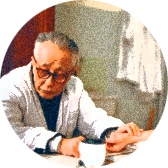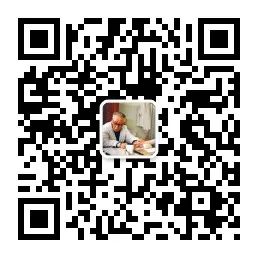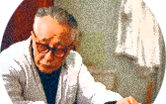
| Introduction: The “Essentials of Cold Damage” states: “The six meridians are affected by cold damage, and the symptoms vary according to the individual. The underlying causes are not the same, leading to diverse manifestations.” This indicates that although the external pathogens are the same, their manifestations differ in different bodies. The reason lies in the “diversity of the body’s constitution,” hence the variations. This suggests a close relationship between exogenous diseases and the basis of internal injuries, especially in the case of exogenous febrile diseases. In this issue, we will share the internal injury basis of exogenous diseases for the reference of fellow practitioners. (Editor: Mu Yi Huo Er)
Hu Xishu’s Classical Formula Medicine
It is essential to pay attention to the relationship between exogenous febrile diseases and internal injury diseases. Different internal injuries have varying impacts on exogenous diseases. For instance, those with internal heat are more prone to yang-type exogenous diseases. For example, individuals with a Zhang Fei constitution often experience a combination of Taiyang and Yangming diseases, or even warm diseases. Conversely, individuals with a Lin Daiyu constitution, who typically have internal deficiency and cold, are more susceptible to gastrointestinal-type colds, such as the Jianzhong Decoction syndrome in deficient individuals. Patients with internal dampness are more likely to be affected by external dampness, which is often referred to as the principle of similar qi seeking like qi, leading to the combination of internal and external pathogens. The “Clinical Guidelines for Medical Cases” states: “The six qi harm individuals, transforming according to the person. Those with yin deficiency have excess fire, and the pathogens tend to invade the nutritive level; those with yang deficiency have excess dampness, and the pathogens tend to harm the defensive level.”Xue Shengbai in the “Treatise on Damp-Heat Diseases” states: “When the central qi is sufficient, the disease is in the Yangming; when the central qi is deficient, the disease is in the Taiyin.”Zhang Xugu in the “Medical Door Stick” states: “The key to treatment is to first observe the strength and weakness of the body’s yin and yang, and then adjust accordingly to achieve stability.”These discussions highlight that the internal conditions of cold and heat, deficiency and excess, influence the nature of exogenous pathogenic qi, including its transmission and transformation. Essentially, this falls under the category of combined exterior and interior diseases.Clinically, combined exterior and interior diseases are more common than simple exterior syndromes, as most individuals have an underlying internal injury. Exogenous diseases arising from an internal injury are classified as combined exterior and interior diseases. It is important to note that combined exterior and interior diseases are a general term, which includes semi-exterior and semi-interior diseases, such as the Chaihu Guizhi Decoction, which represents a combination of Taiyang and Shaoyang diseases, being a semi-exterior and semi-interior condition. Case Study by Dr. Hu Xishu Zhang, male, 44 years old, first diagnosed on March 25, 1965: He presented with chills, no sweating, stiffness in the neck and back, headache, leg pain, dry lips, thin white tongue coating, and a floating tight pulse. Diagnosis indicated a Taiyang and Yangming combined disease, with the formula being Ge Gen Jia Shi Gao Decoction: Ge Gen (Pueraria) 9g, Gui Zhi (Cinnamon Twig) 9g, Ma Huang (Ephedra) 9g, Bai Shao (White Peony) 9g, Sheng Jiang (Fresh Ginger) 9g, Da Zao (Jujube) 4 pieces, Zhi Gan Cao (Honey-Fried Licorice) 6g, Sheng Shi Gao (Gypsum) 30g. Result: After taking one dose of the above medicine, the cold symptoms resolved. The treatment followed the six-step method of classical formula diagnosis, identifying the acute onset, chills, absence of sweating, stiffness in the neck and back, headache, body pain, and floating tight pulse as exterior symptoms, while the dry lips indicated atypical internal heat, thus confirming it as a combined exterior and interior disease. The tight pulse indicated a yang syndrome. Therefore, it was diagnosed as a Taiyang and Yangming combined disease, with the treatment method being to resolve both the exterior and interior. The absence of sweating and the floating tight pulse indicated the use of Ma Huang Decoction, with the stiffness in the neck and back adding Ge Gen, resulting in Ge Gen Decoction, and the dry lips indicating internal heat of Yangming, adding Sheng Shi Gao, resulting in Ge Gen Jia Sheng Shi Gao Decoction. In clinical practice, combined exterior and interior diseases are more common than simple exterior syndromes, especially in individuals with a constitution of yang heat, who should be more vigilant about combined exterior and interior diseases when experiencing exogenous attacks. In cases of Taiyang and Yangming combined diseases, Sheng Shi Gao is often used to clear internal heat, leading to the formation of the combination of Ma Huang and Shi Gao in the formula. The Da Qinglong Decoction is representative of this, which can be seen as a basic formula of Ma Huang Decoction accompanied by the formless heat of Yangming, typically manifested as irritability and thirst, and atypically as sores on the tongue and lips, red eyes, dry mouth, irritability, red tongue, yellow coating, yellow phlegm, yellow nasal discharge, yellow urine, and dry stools.
Recommended Reading
-
Why does using Fu Zi work for fine pulses?
-
A Comprehensive Guide to the Application Points of “Shaoyin Wind-Damp Syndrome”
©Copyright Statement
-
This article is excerpted from:Ma Jiajun. Hu Xishu’s Classical Formula Medicine: Classical Formula Exterior Syndromes [M]. China Traditional Chinese Medicine Press, 2021.Copyright belongs to the relevant patent holders. If there are any improper uses, please contact us.
-
The content shared by this public account is for the learning and communication reference of TCM professionals only.

Scan
Code
Follow
WeChat Official Account | Hu Xishu Classical Formula Medicine
Six Meridians | Eight Principles | Formula Syndromes

